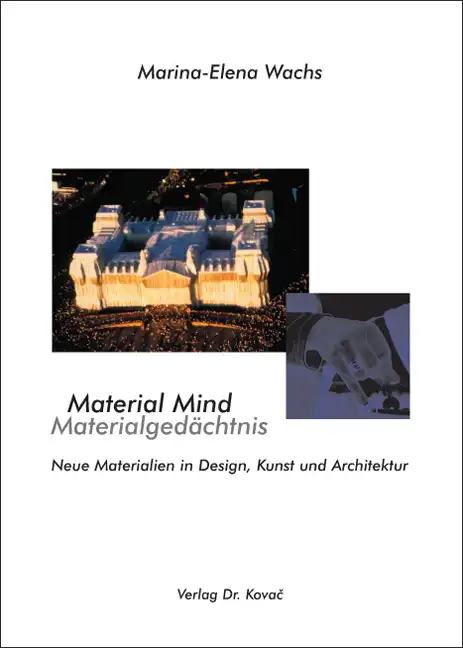Marina-Elena WachsMaterial Mind – Neue Materialien in Design, Kunst und Architektur
Schriften zur Kulturwissenschaft, volume 70
Hamburg 2008, 332 pages
ISBN 978-3-8300-3292-2 (print)
ISBN 978-3-339-03292-8 (eBook)
About this book deutschenglish
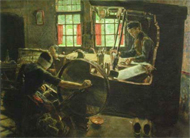 1
1 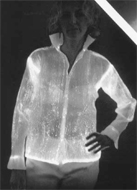 2
2 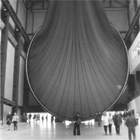 3The interdisciplinary research study describes the handling with „new materials“ today in comparison to traditional substances with the view of historically grown up applications. In practice of the composed model of an „associative material mind“ (AMM) in design, art and architecture, the results are aiming for the development of resistant and long-lasting materials in the future and for conservation of cultural objects and corresponding value for long time. The “Material Mind” has been composed considering the „Cultural Mind“, created by Jan Assmann in the 90ties of the last century. While it is a study, which tried to find a balance between the respects about „old fashioned“ linen of handmade quality (fig. 1) as renewable material for example and a possible „Intelligence“ of synthetics (fig.2) or materials like silicon, this research work is swinging between theory and practice, between yesterday and tomorrow. This means the theoretical reading from the view of science of art and culture as well as the science of behaviour in physical-, psychological and philosophical interpretation finally supports the material objects in the market of design, art and architecture. One example the kind of reading art objects like the sculpture „marsyas“ (fig. 3) (Anish Kapoor) compared to architecture of membranes opens the possibility to learn from each discipline for future projects. Another example is the spacious art of metal by Richard Serra who is pointing to the vacancy between his particular objects and to compare with the building of the Jewish Museum in Berlin created by Daniel Libeskind, who also wants to create the “voids” as offer for the physical perception of human beings. To understand these appearances from the point of view of the neuropsychologist like Elsbeth Stern and Gerhard Roth in comparison with scientists of art like Helga Nowonty and Michael Glasmeier and as well as the interpretation of social scientists like Stephan Rammler and the ethnologist like Hans Peter Hahn or Michael B. Schiffer, this research work can be valuable for the practice in applications of the „associative material mind“ in design, art and architecture. Also the philosophical view of Jean Beaudrillard or Jacques Derrida for example and the knowing about “rembering cultures” of Astrid Erll can support this model AMM to be used in different stages of „material consulting services“ to create new solutions for long-lasting materials. Elsbeth Stern and Gerhard Roth agree about the maxim: „Neurons who fire together will wire together.“ This statement can be transferred into the development process of materials and also into the wired cooperation of people in charge.
3The interdisciplinary research study describes the handling with „new materials“ today in comparison to traditional substances with the view of historically grown up applications. In practice of the composed model of an „associative material mind“ (AMM) in design, art and architecture, the results are aiming for the development of resistant and long-lasting materials in the future and for conservation of cultural objects and corresponding value for long time. The “Material Mind” has been composed considering the „Cultural Mind“, created by Jan Assmann in the 90ties of the last century. While it is a study, which tried to find a balance between the respects about „old fashioned“ linen of handmade quality (fig. 1) as renewable material for example and a possible „Intelligence“ of synthetics (fig.2) or materials like silicon, this research work is swinging between theory and practice, between yesterday and tomorrow. This means the theoretical reading from the view of science of art and culture as well as the science of behaviour in physical-, psychological and philosophical interpretation finally supports the material objects in the market of design, art and architecture. One example the kind of reading art objects like the sculpture „marsyas“ (fig. 3) (Anish Kapoor) compared to architecture of membranes opens the possibility to learn from each discipline for future projects. Another example is the spacious art of metal by Richard Serra who is pointing to the vacancy between his particular objects and to compare with the building of the Jewish Museum in Berlin created by Daniel Libeskind, who also wants to create the “voids” as offer for the physical perception of human beings. To understand these appearances from the point of view of the neuropsychologist like Elsbeth Stern and Gerhard Roth in comparison with scientists of art like Helga Nowonty and Michael Glasmeier and as well as the interpretation of social scientists like Stephan Rammler and the ethnologist like Hans Peter Hahn or Michael B. Schiffer, this research work can be valuable for the practice in applications of the „associative material mind“ in design, art and architecture. Also the philosophical view of Jean Beaudrillard or Jacques Derrida for example and the knowing about “rembering cultures” of Astrid Erll can support this model AMM to be used in different stages of „material consulting services“ to create new solutions for long-lasting materials. Elsbeth Stern and Gerhard Roth agree about the maxim: „Neurons who fire together will wire together.“ This statement can be transferred into the development process of materials and also into the wired cooperation of people in charge. 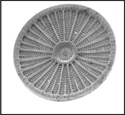 4
4 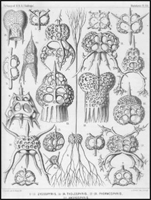 5
5 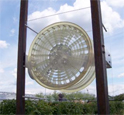 6The paper shows many case studies for functional and aesthetical, technical and economical, emotional and environmental requirements on materials. The creation of objects from long-lasting material often depends on material availability and material seduction at the same time! For example “The second skin” - Also this term is used for medical methods of treatment and for sports wear it is swinging between the intelligent technical design solution and the seduction of fashion design (fig.2) “Material Replacement” is a possibility to “read” the work of Isa Genzken, who has made in the year 2005 a typical iconographical work in white chocolate named “after della robbia, 1500” (fig.8). It is not eatable. From the distance this sculpture looks like ebonite or ivory. Changing or replacing material with regard on the traditional kind of reading art – also in handling products or in reading the historical sense – is aiming for a change of the perception in material development. Material Replacement has turned the perception of typical architecture material upside down like the exposed concrete in the 1950th and LiTraCon from 2005 and it raises the question about its metaphorical value. “Nature systems for technical material“ shows the aspect of Bionic in Design. Caused by his biological backround Ernst Haeckel, expresses in his works of art in 1860ies (fig. 5) the great respect for intelligent systems in the nature like the work of the Foundation Alfred Wegner Institute (AWI) for Polar and Marine Research in Bremerhaven (fig. 4 + 6) in 2005. Today also the transportation design (fig. 6: Wheel rim, AWI) take benefit of natural examples with respect to economical and energy saving aspects – to take care of the globe impact. These examples have shown that the synaesthetics and synergetic solutions express a possible future material culture. Meanwhile the handling of materials will be decided from each perspective: from the view of designer, of architects and also of artists. I am looking forward to refine the concept of “associative material mind” (AMM) to proof its capability for a culture of long-lasting materials with regard on the market material objects and also with respect to historical ways to handle and to “speak with” materials. Beside their functional, economical and ecological exercises the design products, artworks and monuments of the future have to verify to be remembered in the idea of the “memorial status” – also in material ideas.
6The paper shows many case studies for functional and aesthetical, technical and economical, emotional and environmental requirements on materials. The creation of objects from long-lasting material often depends on material availability and material seduction at the same time! For example “The second skin” - Also this term is used for medical methods of treatment and for sports wear it is swinging between the intelligent technical design solution and the seduction of fashion design (fig.2) “Material Replacement” is a possibility to “read” the work of Isa Genzken, who has made in the year 2005 a typical iconographical work in white chocolate named “after della robbia, 1500” (fig.8). It is not eatable. From the distance this sculpture looks like ebonite or ivory. Changing or replacing material with regard on the traditional kind of reading art – also in handling products or in reading the historical sense – is aiming for a change of the perception in material development. Material Replacement has turned the perception of typical architecture material upside down like the exposed concrete in the 1950th and LiTraCon from 2005 and it raises the question about its metaphorical value. “Nature systems for technical material“ shows the aspect of Bionic in Design. Caused by his biological backround Ernst Haeckel, expresses in his works of art in 1860ies (fig. 5) the great respect for intelligent systems in the nature like the work of the Foundation Alfred Wegner Institute (AWI) for Polar and Marine Research in Bremerhaven (fig. 4 + 6) in 2005. Today also the transportation design (fig. 6: Wheel rim, AWI) take benefit of natural examples with respect to economical and energy saving aspects – to take care of the globe impact. These examples have shown that the synaesthetics and synergetic solutions express a possible future material culture. Meanwhile the handling of materials will be decided from each perspective: from the view of designer, of architects and also of artists. I am looking forward to refine the concept of “associative material mind” (AMM) to proof its capability for a culture of long-lasting materials with regard on the market material objects and also with respect to historical ways to handle and to “speak with” materials. Beside their functional, economical and ecological exercises the design products, artworks and monuments of the future have to verify to be remembered in the idea of the “memorial status” – also in material ideas. 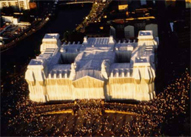 7
7 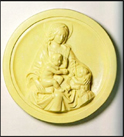 8
8The Author
Marina – Elena Wachs, (*1966) is master tailor, tailor directress and Designer. In 2007 she graduate at Braunschweig University of Art with the work of "Material Mind – New Materials in Design, Art and Architecture” - An interdisciplinary research work about the handling of new materials in history and today. She works as consultant for design companies and architects, in cooperation with museums and as teacher. Marina Wachs wants to link the great three: handicraft, industry and sciences. Her present research is an interdisciplinary way of regarding materials in creative fields to create durable and respected substances for keeping responsibility of material culture and material value. New researches from Marina – Elena Wachs try to value the memorial status of materials with the help of the maxim: "remembering material – is touching and speaking with material”.Keywords
AMMArchitekturAssociative material mindAssoziatives MaterialgedächtnisDesignDesignwissenschaftErinnerungskulturenIndustriedesignKulturelles GedächtnisKulturwissenschaftKunstKunstwissenschaftMaterialberatungMaterialgedächtnisMaterialhistorieMaterialien im DesignMaterialien in der ArchitekturMaterialien in der KunstMaterielle CodesNachhaltige MaterialienNachhaltige WerkstoffentwicklungNachhaltigkeitNeue MaterialienTransportation DesignYour book at Dr. Kovač Publishing House
We publish your doctoral thesis >>
